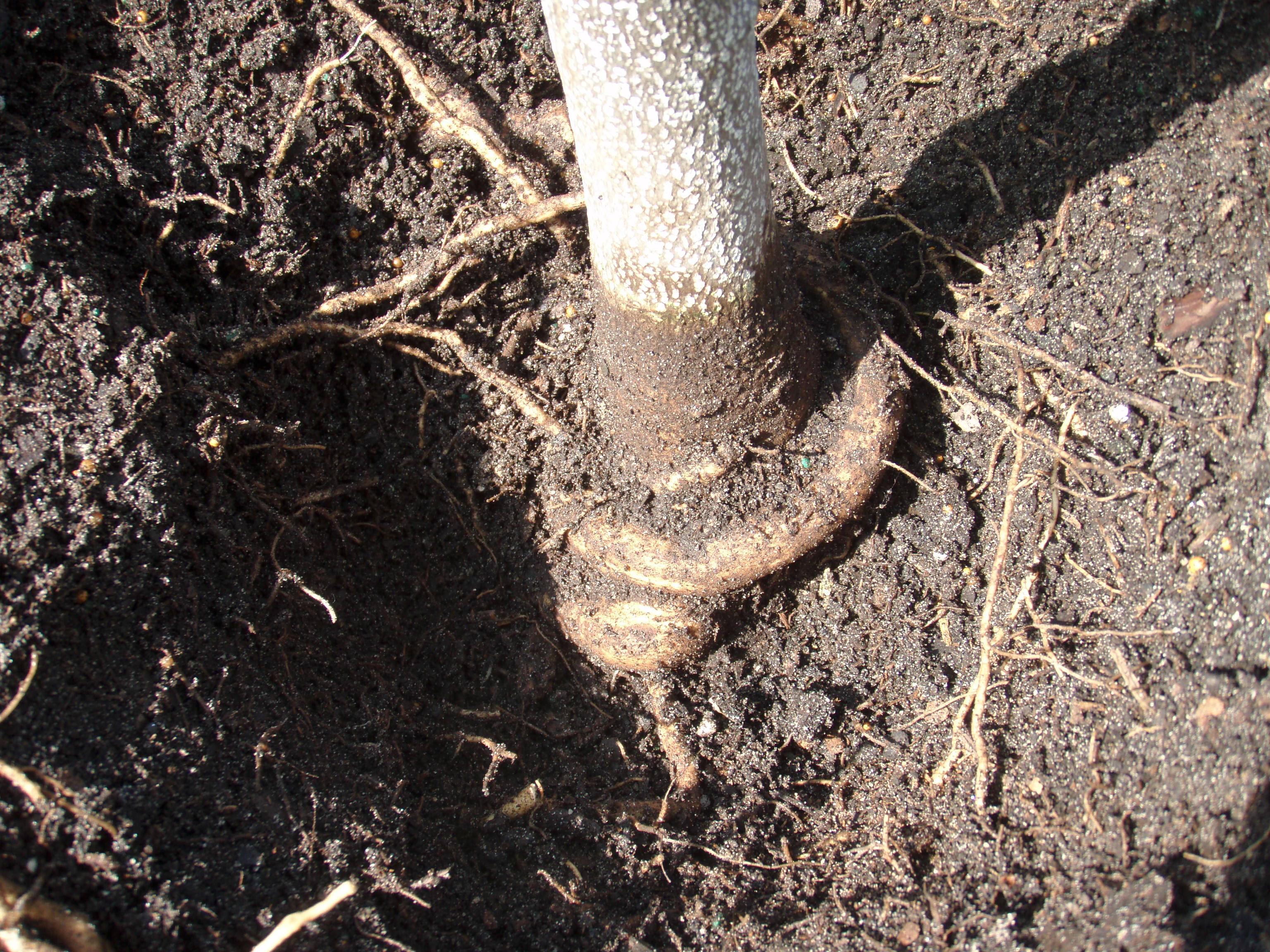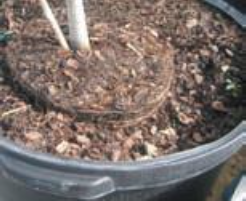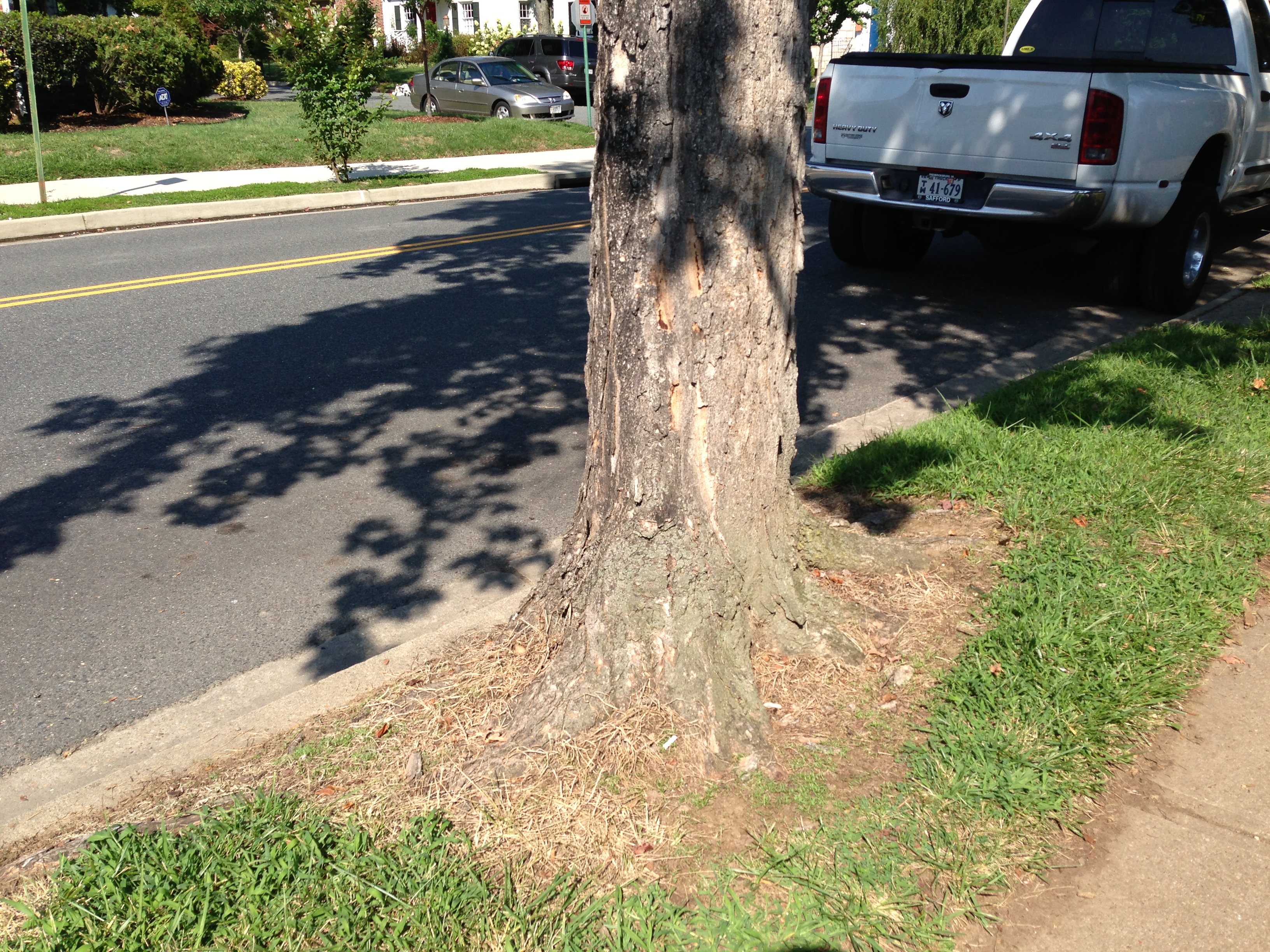Planting Bare Root to Prevent
Girdling Roots
Preparing the Tree

Break into the root ball with a claw or sharp hoe or shovel.

Loosen the planting medium and shake it off of the roots.

Wash off the roots with a strong water spray (do not use a pressure washer) so you are able to see the roots and if there are any girdles (turning of the roots)– be sure to keep the root hairs moist at all times during this process.

Cut the root before the root turns (once a root is turning – it continues to always turn).

If the root is so thick you are unable to see the entire root- use a saw or sharp knife to slice the root ball into quarters.

Identify the root collar – this is where the tree flares slightly above the roots. Make sure that you do not confuse the graft with the true root collar.
Planting the Tree

Dig a wide 3 foot hole that is not very deep.

Make sure the planting hole is solid at the bottom – stomp on the bottom.

Place the tree in the hole making sure that the tree collar is above the soil line.

Spread out the roots so they extend straight out from the tree.

Back-fill the soil making sure no air pockets are left – push down on the soil with your foot gently around the planting hole.

Mulch the tree with pine bark nuggets or Virginia Fine mulch – making sure that the mulch is no more than 2-3” deep.

Stake the tree with 3 stakes and chain. Remove the chain and stakes after 6 months or when the tree is stable and standing straight.. Do not leave on the tree any longer than a year.
In nursery containers, roots fill the growing media provided in the pot. Once roots reach the edge of this container, they often begin to circle or dive deeper along the space between the growing media and the container. If this situation is not corrected at planting, defects can compromise tree health and stability in later years.
Trees with disturbed root systems outperform those without disturbance. the short-term vigor of trees may be affected by root ball disturbance long-term health will be enhanced.
In the field, arborists face many mature tree issues, which are a result of improper planting techniques. These issues include girdling roots, buried root collars and compromised structural root plates. At the Bartlett Tree Research Laboratories (BTRL), they have installed research plots to determine how best to manipulate container trees at planting time to minimize or avoid problems as trees mature. In nursery containers, roots fill the growing media provided in the pot or box. Once roots reach the edge of this container, they often begin to circle or dive deeper along the space between the growing media and the container. If this situation is not corrected at planting, defects can compromise tree health and stability in later years.

Girdling root limiting water and nutrient flow to crown

Root Collar and Bare Roots

Smaller container sizes were potted into larger containers without correcting circling roots creating multiple layers of defects.

Tree flare
The problem is exacerbated, because large container trees may have multiple layers of defects at each stage of production in the nursery. For example, a #15 container may have circling root defects at the #10 and #5 container sizes. This makes planting more difficult because we have to correct potential problems, not only on the outside of the root ball, but on the inside as well.
Studies conducted at BTRL and other institutions have shown that when root balls are “disturbed” to break or cut these circling (or diving) roots, there will likely be a reduction in tree health and growth for one to three seasons after planting as compared to trees that were planted directly into the soil without any root disturbance. Studies by other institutions have shown that after these first few years, trees with disturbed root systems begin to outperform those without disturbance. There are many differences in the methods and species used in all of the ongoing studies, but the trends are apparent. The clear message is that the short-term vigor of trees may be affected by root ball disturbance, but the long-term health will be enhanced
